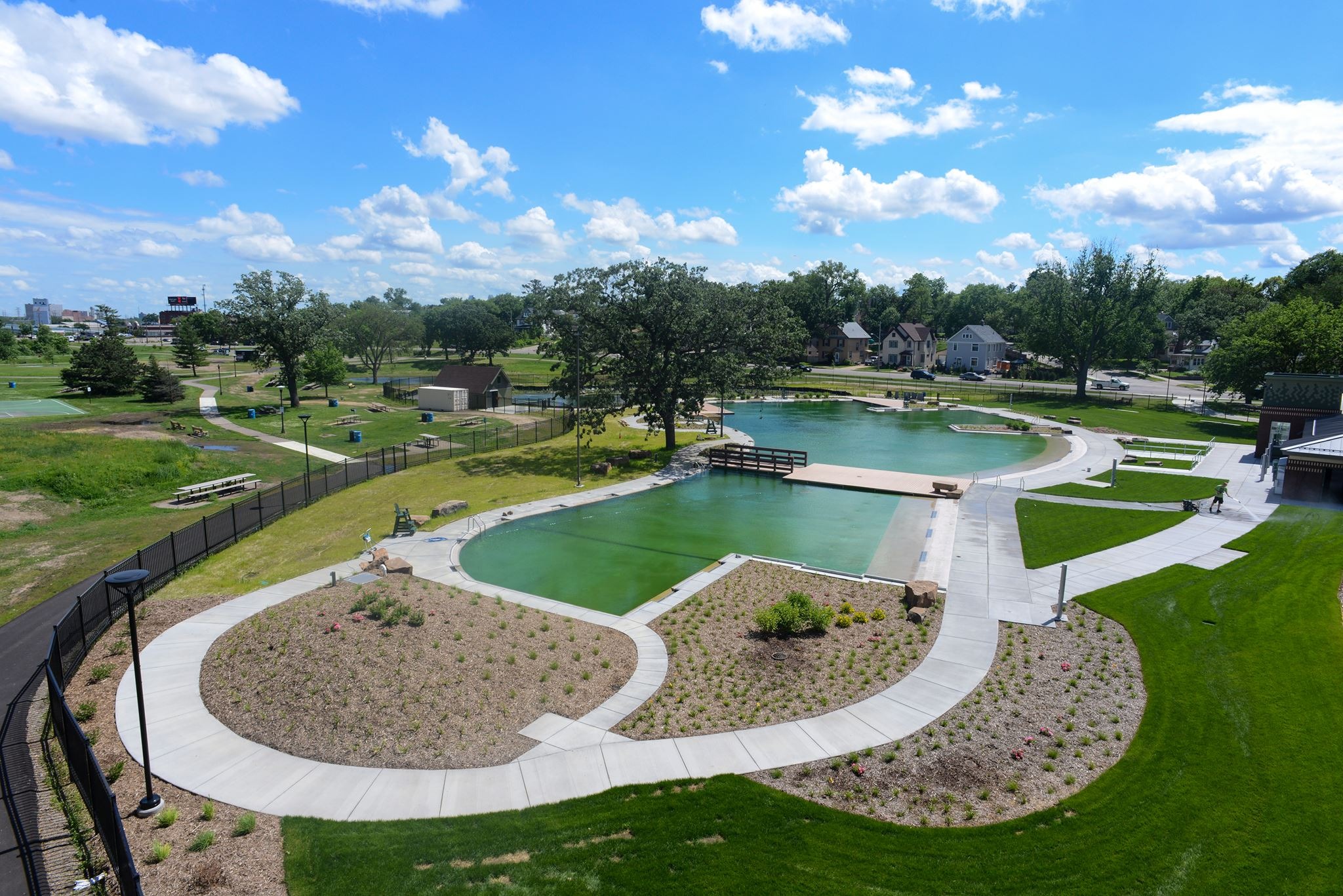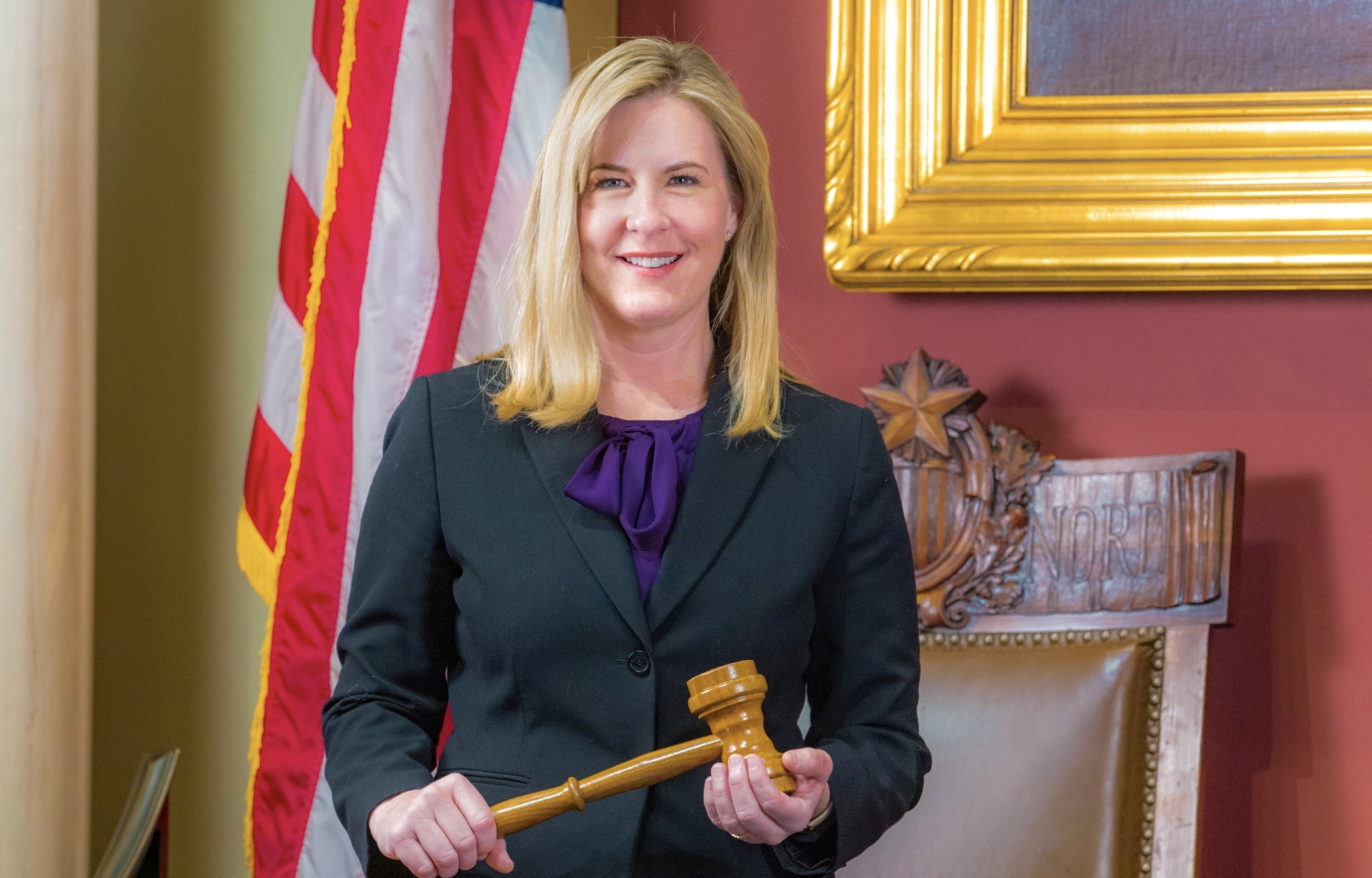I don’t own a summer cabin for the following reasons: I lack lavish generational wealth; my commitment to urban living has become almost my entire personality; and I’m not a pontoon person. Plus, I dislike long drives and Styrofoam containers full of fish bait refrigerated next to people-food. My ichthyic relationship to water is all about feeling like a fish, not catching one to eat for dinner.
Outdoor swimming is my favorite summer activity. Gliding underwater offers a muffled, momentary reprieve from my landlubbing to-do list, exercise that doesn’t feel like a workout, and relief from the heat. Plus, a lazy afternoon at the beach or pool with my kids provides an incalculable return on investment of all the dollars and hours I spent on swim lessons over the last decade to make them proficient treaders of water. Although preparing for an urban beach day involves simply shoving a tote bag full of snacks and frayed towels into my minivan or bicycle saddle bag, I start planning my summer swimming strategy long before ice out, around the time gardeners begin to dogear pages in seed catalogs, when the Wim Hoff devotees dominate the water they’ve chipped open on Lake Harriet and Cedar Lake.
In the early part of the summer, I make the 12 beaches in Minneapolis my priority, while the water is cold and not yet scummy (barring any unseasonably early algae bloom). Each city beach has its drawbacks alongside its charms, like Lake Harriet North Beach, where a portion of the beach is closed to protect nesting turtle habitat. On the charming flipside: BABY TURTLES! Lake Hiawatha Beach, located on a smallish city lake, is frequently closed because of E. coli contamination, but when it’s clean the water is bathtub warm. Wirth Lake Beach swimmers tolerate noise pollution from Hwy. 55 in order to enjoy sightings of urban wildlife like muskrats and herons. “Muskellunge In These Waters” signs temper Bde Maka Ska skyline views, while Cedar Lake East Beach’s old growth shade is marred by frequent MPD foot patrols. Lake Nokomis Main Beach-goers have to spread towels over exceedingly grimy sand in order to enjoy refreshments from the brand new concession vendor The Painted Turtle. Worth it!
The imperfection is the point. The public restrooms’ gritty, unswept floors and trickling, push-button faucets signify the shared commons. Minneapolis beaches belong to everyone: They’re accessible, close to home, and free. I'll take flawed and interesting public spaces over the manicured, privatized sublime anytime.
Despite its variety of imperfectly perfect beaches, Minneapolis is short on (or shallow on?) deep water. The Minneapolis Park & Recreation Board maintains a glorious number of wading pools in neighborhood parks, but the only appropriate way for a grown-up to cool off in a kiddie pool is to supervise children from the side while dangling their legs in the water, or wading in to rescue a missing toy or a misbehaving toddler. The pools at the otherwise excellent water parks, Jim Lupient and North Commons, only reach chest high on an average adult. In fact, the only outdoor deep water in Minneapolis is at Webber Natural Swimming Pool or on certain weeknights when Open Swim Club schedules lifeguarded swims across Nokomis and Cedar lakes. Which brings me to my second phase of summer swimming strategy: outdoor pools that provide depth.
If the lifeguards move about the pool deck in a rapid and weird half-run, half-duck walk, bent elbows propelling them forward, like an aerobic move from an old-timey 1980s exercise video? That’s how you know you’re at the Edina Aquatic Center. GM Patty McGrath confirmed to Racket that the distinctive walk is an intentional part of the EAC’s lifeguard training. The EAC charges the highest daily admission price of any municipal recreational water facility in the entire metropolitan area. Besides the unintentionally entertaining synchronized lifeguard speed walks, the facility does offer a splash pad, water slides, zipline, high dive, and for an extra fee (because Edina), a wristband that allows one to wait in an hour-long line, spend a couple of seconds on a surf simulator, then wipe out.
Across the Mississippi (water safety reminder: don’t swim in the river!), St. Paul maintains four outdoor aquatic centers, including the aging but adequate Highland Park Aquatic Center and the phenomenal Como Regional Park Pool, which has a lazy river, climbing wall, and a concession stand that sells hand-scooped ice cream sundaes. Other reasons and directions from which to leave Minneapolis include, to the South, Richfield’s Outdoor Pool with slides and splash pad; to the West, St. Louis Park’s Aquatic Park with slides, zero depth entry pool, and floating obstacle course; to the Northeast, Shoreview YMCA’s outdoor lap pool and diving well.
Next on my swimming agenda are the swim ponds managed by Three Rivers Park District and Washington County. With their clear filtered water and sand bottoms, swim ponds offer the combined best of chlorinated pools and natural lakes. That said, the ponds are but a simulacrum of an ideal swimming environment. They feel artificial and stilted, like a suburban cul-de-sac, or a message crafted by an AI bot trying to pass as human.
When I overhear conversations about vacation home ownership or scroll past photos of acquaintances in PFDs #UpNorth, cabin envy threatens to sour the season like an unbalanced lemonade. But then I remember that I don’t like sweet drinks anyway, and cabin swimming means jumping off a dock. Consider the slimy weeds underfoot, getting splashed by wake from recreational watercraft, and listening to craggy fishermen complain that all of the dock swimming will scare away the bites.
When summer temperatures extend through the end of September, weeks after the public pools close, I return to the beaches of Minneapolis on hot autumn afternoons. A bonus of my devotion to urban swimming means that my climate conscience is clear because I’m not making any end-of-season carbon-spewing trips Up North. And I don’t have to perform manual labor tasks like taking the dock out, shutting off plumbing, or winterizing boats. Maybe this is an anomalous, unpopular take, but I wouldn’t trade a summer in the city for even the most bucolic northern Minnesota lakefront property.







